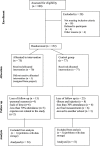Eight months of school-based soccer improves physical fitness and reduces aggression in high-school children
- PMID: 32508386
- PMCID: PMC7249792
- DOI: 10.5114/biolsport.2020.94240
Eight months of school-based soccer improves physical fitness and reduces aggression in high-school children
Abstract
School-based programmes have shown promising results in the reduction of aggressive behaviour, but the effectiveness of physical activity modalities among adolescents remains to be determined. The aim of this study was to determine the effects of a school-based soccer programme on physical fitness and aggression in adolescent students. One hundred and five high school students were randomized to a small-sided soccer training group (SG) or a control group (CG). In addition to the regular physical education classes performed as part of a curriculum, the SG completed eight months of small-sided soccer training twice a week after school. Aerobic fitness (YYIR1), vertical jump (VJ), backward overhead medicine ball throw (BOMBT), and Buss and Perry's aggression questionnaire were evaluated before and after eight months of training. Greater improvements were observed in the SG than in the CG in the BOMBT (%diff=4.3, ŋp 2=.308) and YYIR1 tests (%diff=2.2, ŋp 2=.159), and physical aggression subscale (%diff=-12.1, ŋp 2=.144). Extra, school-based recreational soccer for adolescents was accompanied by a significant improvement in physical fitness, compared to physical education classes only. Moreover, the implementation of recreational soccer into regular physical education classes seems to be a potentially appropriate stimulus for reducing aggression in high-school students.
Keywords: Adolescents; Small-sided games; Soccer; Team sports; Training and testing.
Copyright © Biology of Sport 2020.
Conflict of interest statement
No potential conflicts of interest were reported by the authors.
Figures
References
-
- Caglar E, Canlan Y, Demir M. Recreational Exercise Motives of Adolescents and Young Adults. J Hum Kinet. 2009:22.
-
- Randers MB, Andersen TB, Rasmussen LS, Larsen MN, Krustrup P. Effect of game format on heart rate, activity profile, and player involvement in elite and recreational youth players. Scand J Med Sci Sports. 2014;24(Suppl 1):17–26. - PubMed


